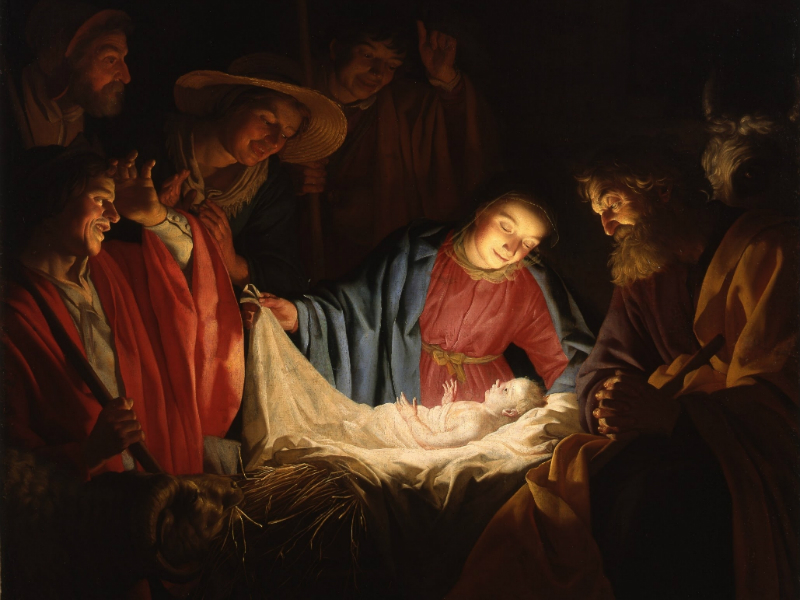It’s as predictable as Christmas trees and seasonal gift-giving: every winter, as the Christian world prepares to celebrate Christmas, some senior Palestinian figure makes the claim that Jesus wasn’t really a Jew, but was instead a Palestinian.
This year, according to Palestine Media Watch (PMW), Laila Ghannam, the district governor of Ramallah and El-Bireh, opened Christmas celebrations in the Ramallah Municipal Building by recalling “the suffering of Jesus, the Palestinian.”
Back in 2013, Palestinian President Mahmoud Abbas called Jesus a Palestinian messenger of hope.
Palestinian negation of Jewish ties to the Holy Land goes beyond Jesus. Last month, PMW reported that archeologist and Fatah member Abir Zayyad made the bizarre claim that “we have no archeological evidence of the presence of the Children of Israel in Palestine in this historical period 3,000 years ago, neither in Jerusalem, nor in all of Palestine.”
PMW similarly reported that in November, Riyad Al-Malki, the Palestinian Authority’s minister of foreign affairs, told a United Nations conference that “Palestine is the cradle of civilization and the religions and its capital is Jerusalem, on whose walls is engraved some of the Palestinian people’s past, heritage and history. Israel, the occupying power, is striving to destroy this heritage, take control of it and falsify the history that is witness to our people having been rooted in this land for over 10,000 years, which negates the settler Israeli colonialist narrative.”
Dan Bahat has heard all this before. As the recipient of the Jerusalem Award for Archeology, Bahat is a veteran archeologist who has served as the director of excavation on many sites in Israel, including the Western Wall Tunnel in Jerusalem.
A prolific author on matters of archeology, he said Palestinians who make such claims “live in this illusion. All their lives they live in this illusion. That’s how they believe. That’s how they are.”
Bahat, who for many years taught at the University of St. Michael’s College at the University of Toronto as a visiting professor, said it’s impossible for an archeologist to miss the Jewish connection to the Land of Israel.
“How can you dig in this country and overlook Jewish remains?” he asked. “Wherever you dig, you find Jewish remains.”
Claims about Jesus being a Palestinian and rejections of the Jewish ties to the land are all about politics, not science, he said.
“They want the right to the country. If they deny Jesus as a Jew, they deny Jewish rights (to the land). It’s part of a whole scheme of denial,” he said.
That top-down approach has filtered down to many average Palestinians.
Speaking on the phone from Israel, Bahat said that when he was at the gym recently, an Arab he knew told him, “You stole everything from us.” Bahat said his Arab interlocutor claimed that, “Hebrew is a new language, the Bible is nothing, a new creation, that the Hebrew of the bible is not the Hebrew of today.”
He said that attitude leaves many Palestinians “blind to history and science.”
There are some, however, who know better, but they feel intimidated. “I meet Palestinian scholars. They close their ears, they don’t want to hear it or talk about it. They’re afraid of the street,” he said.
The Palestinian narrative has found acceptance at the United Nations Educational, Scientific and Cultural Organization (UNESCO). In 2016, UNESCO adopted a resolution that referred to the Temple Mount – the site of two ancient Jewish Temples – as “al-Aqsa Mosque/Al-Haram Al-Sharif,” a Muslim holy site, ignoring the Jewish origin of the place.
UNESCO is an organization where “the Arabs and their supporters have a majority,” Bahat said.
The reality, however, is that archeologists continue to uncover the ancient Jewish connection to Jerusalem and Israel, Bahat said.
Archeologists are still sifting through soil removed from the Temple Mount when an underground mosque was constructed. They’re finding ancient Jewish coins, fragments of architectural structures and parts of paving slabs, he said.
Other recent evidence for the historical connection between the Jewish people and the land of Israel abound.
Beit She’arim, a moshav in northern Israel, is being excavated and a cemetery with the remains of first- and second-century CE Jewish sages has been found, including Yehudah HaNasi, the compiler of the Mishnah. An impressive mosaic has been found in the Huqoq synagogue near the Sea of Galilee. Likewise, the City of David, for years a neglected archeological site in Jerusalem, is turning up treasures, including the remains of a 10th-century BCE water system, as well as remains from the Maccabean time.
And Khirbet Qeiyafa, also known as Elah Fortress, which overlooked the Elah Valley, revealed that the Davidic kingdom of the 10th century BCE extended far beyond the narrow confines of Jerusalem, he said.
Bahat’s upcoming book, The Temple Mount: the Archaeological History, should be released in the next few months and translated into English soon afterwards.
It’s a subject he’s intimately familiar with. As the excavator of the Temple Mount Tunnel, which runs north-south along the western retaining wall of the Temple Mount, Bahat has seen the tunnel become the third most visited tourist site in Israel, behind only Masada and the Israeli Museum.
So far, the Palestinians haven’t taken credit for it.
